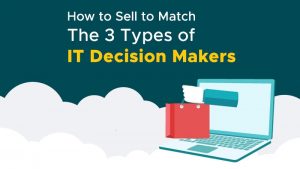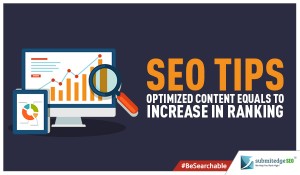Working capital is a vital resource for small business owners and if you’re running low on cash, being able to borrow money quickly is a must. When you need to beef up your business’s inventory, a term loan may be the best solution.
A term loan is similar to a mortgage or car loan, in that it has a fixed repayment schedule. This type of loan offers convenient funding and the interest and fees are usually more attractive than an alternative like a merchant cash advance.
After you’ve finished reading this guide, you’ll understand:
- How inventory financing works
- Who should use inventory financing
- What the pros and cons are
- How to apply for an inventory loan
What Is Inventory Financing?
Inventory financing is a type of short-term borrowing option that business owners use to purchase inventory. Typically, the inventory you buy and/or any existing inventory the business has serves as collateral for the loan. If you end up in default, those assets would be turned over to the lender in lieu of payment.
Term loans can feature shorter or longer payoff periods but when they’re used for inventory purchases, a shorter term is the norm. Depending on the lender, terms range from three months to three years.
The annual percentage rate (APR) can be fixed or variable and it’s possible to borrow up to 100% of the inventory’s value. In terms of a dollar amount range, term loans may start as low as $ 2,000 and go up to $ 500,000, based on which lender you choose.
Who Inventory Financing Is Designed to Help
As the name suggests, inventory financing is suited to businesses that sell a tangible product. If your business is purely service-based, an inventory loan wouldn’t be a viable option for meeting your cash flow needs because you have no physical product to speak of. You could still fund your business with a term loan but you’d need to offer up other personal or business assets as collateral.
Retail stores, wholesalers and specialty shops are all examples of businesses that could use inventory financing to keep their shelves stocked. Inventory loans are also useful for seasonal businesses that see their cash reserves drop during slower times. Individual lenders can cater to certain types of businesses but generally, your ability to qualify for financing depends more on your business’s track record than what you sell.
For that reason, inventory financing is targeted towards businesses that have a history of purchasing inventory. If your business is a startup that’s buying inventory for the first time or has yet to complete its first sale, something like a business credit card or a small business startup loan would likely be a better fit.
When Should You Use a Term Loan to Finance Inventory Purchases?
Deciding whether a term loan makes the most sense when you need to purchase inventory depends on a few different factors. For example, a term loan might be appropriate if:
- You have a strong sales record. Lenders want to see that you have a regular stream of revenue coming in from product sales. Being able to demonstrate consistent sales shows lenders that you’re financially capable of repaying the loan.
- Your inventory turns relatively quickly. Having inventory move in and out of your business at a relatively rapid pace is a good thing, not only for you but the lender as well. You both have reassurance that rather than be collecting dust, your stock will be selling and keeping your revenue numbers steady.
- You want to avoid empty shelf syndrome. A well-supplied store is important not only for your profit margin but also for attracting customers. If passersby see that your display windows are looking a little bare and you’ve only got a limited amount of items in stock, that might give a false impression that your business is struggling. Customers could opt to take their money to a competitor who has an abundance of products for sale, which is the last thing you want.
- You’ve found a deal you can’t resist. Buying products in bulk can save your business money, especially if the seller offers a discount based on how large your order is. If you run into a great deal on something but you don’t want to drain your business account, using a term loan to snap up the extra inventory ensures that you don’t miss out. Getting products at a reduced price can also help to increase your profits when you eventually sell what you’ve purchased.
- You need to stock up for the busy season. While some businesses see their revenue remain fairly stable all year-round, others see it ebb and flow in tandem with the seasons. Someone who operates a ski rental shop near a winter resort, for example, is going to be busier during the colder months but see a slowdown when the weather warms up. A term loan can help you get ready for the coming peak season if your sales have dropped off.
- You’ve been turned down for traditional financing. Getting approved for a bank loan can be challenging to say the least. Things like your personal and business credit scores, your sales history and your debt-to-income ratio are all going to come under the microscope. Carrying a high balance on one of your credit cards or having a less than perfect credit score is sometimes all it takes to kill the deal. When you apply for a term loan with an online small business lender like Bond Street, however, your credit history isn’t necessarily a dealbreaker.
What Are the Pros and Cons?
The advantages of using a term loan to get the inventory you need are many. For starters, funding is relatively quick and it’s possible to have the money deposited into your bank account within a matter of days. That’s extremely important for businesses that don’t have weeks to wait around to purchase inventory.
If you’re using an online lender versus a traditional bank, you’re likely to run into fewer obstacles during the application process. That’s a definite plus if you’re trying to grow your business but other financing doors have been closed to you. You might also have more flexibility in negotiating repayment terms that fit with your business’s budget.
Before you pull the trigger, however, there are a few potential downsides to keep in mind. Business owners should pay attention to three specific things prior to signing off on an inventory loan.
Interest rate
Inventory loans are by nature a riskier bet for lenders because they’re banking on your ability to sell all of the inventory you’re purchasing. As a result, the APR for this kind of loan may be at the higher end of the scale, especially if you choose a shorter repayment term. It’s important to weigh the cost of the interest against the convenience of the loan and the profits you anticipate making off the inventory to determine whether it’s worth the cost.
Fees
Aside from the APR, business owners must also factor in the fees associated with a term loan. For instance, it’s not uncommon to pay an origination fee in the neighborhood of 2% to 5%. Again, those additional costs must be considered if you’re comparing a term loan to other inventory financing methods.
Personal guarantee
Inventory loans require collateral but lenders can also impose another check on your promise to repay–the personal guarantee. A personal guarantee effectively makes you personally liable if your business defaults on an inventory loan. So not only is the lender able to lay claim to your inventory, they could also sue you to attach your personal assets. A personal guarantee is almost always unavoidable with a term loan but you should be clear about what it involves.
Applying for a Term Loan
If you’re certain that a term loan is the best way to pay for inventory purchases, you shouldn’t let the fact that you’re pressed for time paint you into a corner. Here are a few things you should do as you’re preparing to apply for inventory financing:
- Take stock of your credit. You don’t need perfect credit to qualify for a term loan but it’s helpful to know where you stand. Pull your business and personal credit reports to see if there are any major black marks that could prevent you from getting a loan.
- Do some rate-shopping. Comparing rates on term loans takes just a few minutes of your time but it can be well worth it if you’re trying to secure the lowest APR possible. Look at multiple lenders to see who’s offering the most favorable terms.
- Get organized. You can apply for a term loan with just a few clicks but you’ll need to hand over some supporting documentation to wrap things up. Getting things like your tax returns, a profit and loss statement, a list of your existing inventory and a copy of the purchase order for the stock you want to buy together early on will keep things moving smoothly once the lender begins reviewing your application.
Business & Finance Articles on Business 2 Community
(68)
Report Post







